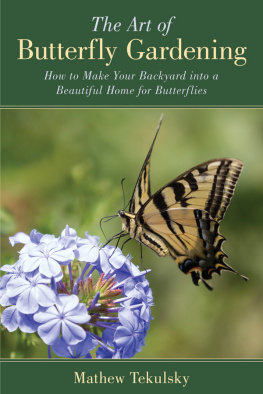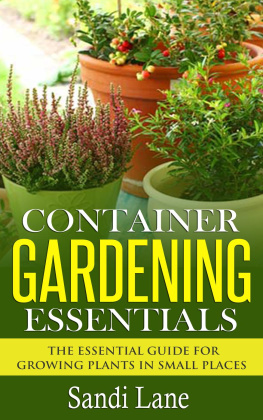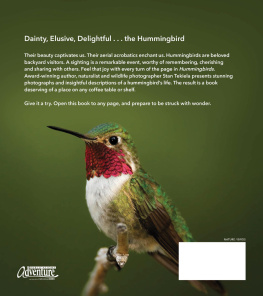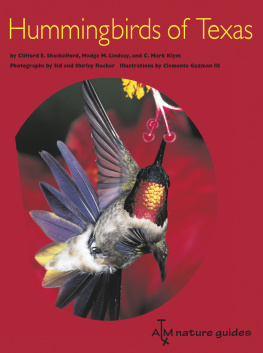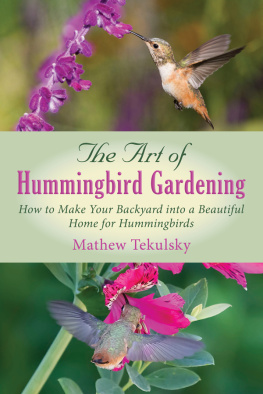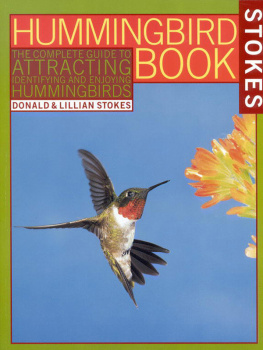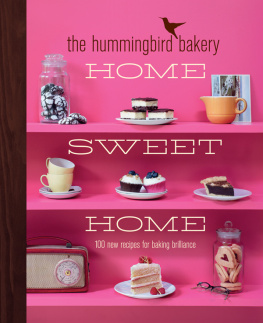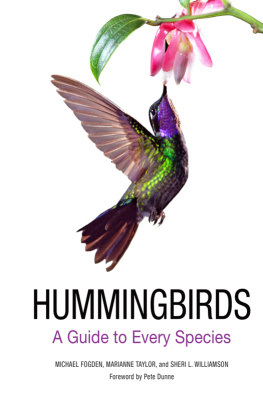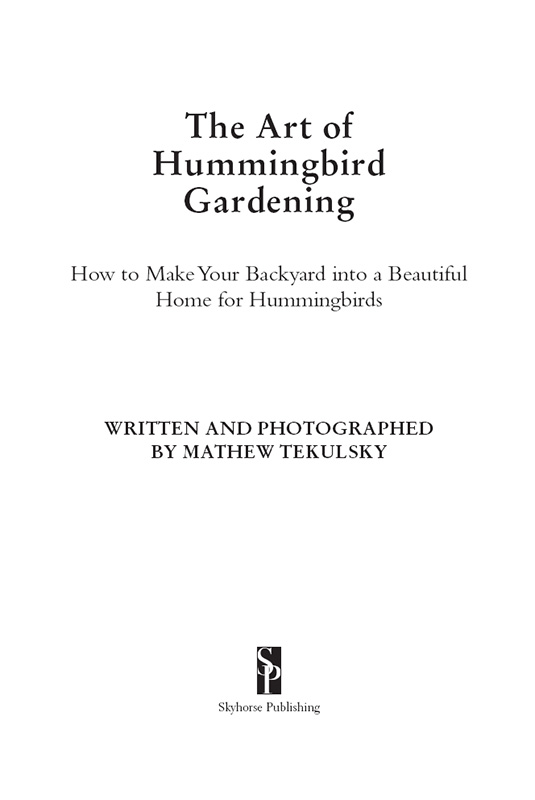Also by Mathew Tekulsky
The Art of Butterfly Gardening
Backyard Bird Photography
Making Your Own Gourmet Coffee Drinks
Backyard Birdfeeding for Beginners
Copyright 2015 by Mathew Tekulsky
Photography copyright 2015 by Mathew Tekulsky
All rights reserved. No part of this book may be reproduced in any manner without the express written consent of the publisher, except in the case of brief excerpts in critical reviews or articles. All inquiries should be addressed to Skyhorse Publishing, 307 West 36th Street, 11th Floor, New York, NY 10018.
Skyhorse Publishing books may be purchased in bulk at special discounts for sales promotion, corporate gifts, fund-raising, or educational purposes. Special editions can also be created to specifications. For details, contact the Special Sales Department, Skyhorse Publishing, 307 West 36th Street, 11th Floor, New York, NY 10018 or .
Skyhorse and Skyhorse Publishing are registered trademarks of Skyhorse Publishing, Inc., a Delaware corporation.
Visit our website at www.skyhorsepublishing.com.
10 9 8 7 6 5 4 3 2 1
Library of Congress Cataloging-in-Publication
Data is available on file.
Cover design by Jane Sheppard
Cover photos credit: Mathew Tekulsky
Print ISBN: 978-1-63220-527-8
Ebook ISBN: 978-1-63220-902-3
Printed in China
To my parents, Patience Fish Tekulsky and Joseph D. Tekulsky
Contents
What Is Hummingbird Gardening?
Hummingbird Lives
Regions and Seasons
Getting Started.
Hummingbird Flowers
Hummingbird Feeders
Hummingbird Garden Activities.
Conservation of Hummingbirds
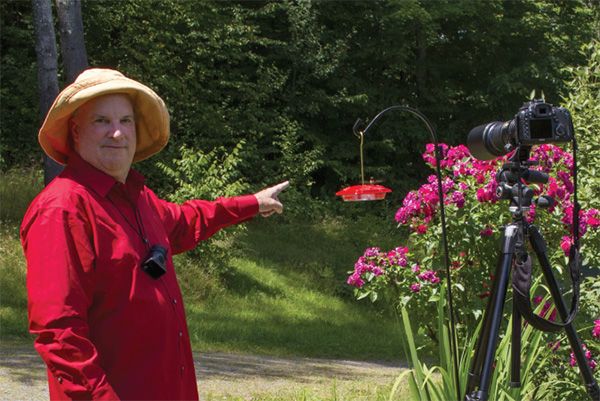
Mathew Tekulsky with a Ruby-throated Hummingbird
Photo courtesy of Patience Fish Tekulsky
Acknowledgments
At Skyhorse Publishing, I would like to thank my editor, Kristin Kulsavage, and Tony Lyons. Thanks, as well, to my literary agent, Peter Beren. Also, a note of appreciation to Kimball Garrett, for his technical advice on birds.
Authors note: The photographs in this book were taken in my garden in the Brentwood Hills section of Los Angeles; in my garden in Adamant, Vermont; at hummingbird nests in Santa Monica and Sherman Oaks, California; and at the Bellavista Cloud Forest Reserve in Ecuador.

Annas Hummingbird
CHAPTER 1
What Is Hummingbird Gardening?
It is a calm, clear day, and you are standing in a garden that is designed to attract hummingbirds. All around you are flowers that provide nectar for these smallest of birds, which hover on fast-beating wings while they drink. An orange Cape honeysuckle covers a trellis on one side of the garden, while a trumpet creeper does the same on the opposite side. A row of pink powder puff runs along the rear of the yard, and in each corner, a red-ironbark eucalyptus grows.
Behind the flower beds, a long stretch of pink Chinese lantern graces one side of the garden, while a row of yellow bladderpod blankets the other side. In the flower beds, the richly colored flowers of woolly blue curls grow side by side with the scarlet flowers of pitcher sage, penstemon, and columbine, while throughout the rest of the garden, the orange flowers of bird of paradise, the yellow flowers of tree tobacco, and the purple flowers of lantana can be seen. In front of the pink powder puff, a long strip of California fuchsia provides a three-foot-tall curtain of tubular red flowers for the hummingbirds to use.
Suddenly, you hear a familiar soundthe gentle humming of wings. In that same moment, a male Annas Hummingbird is upon you, hovering in front of your face, just inches away. Hit at just the right angle by the suns rays, the hummingbird flashes a shiny, ruby-red throat and crown at you, then looks away and the colors turn dark. The hummingbird, scarcely larger than your thumb, bobs up to one spot in thin air, then bobs over to another, turning his head toward you each time so that you are both eye-to-eye.

Annas Hummingbird hovering
Satisfied that he knows who and what you are, the hummingbird darts over on a straight trajectory to a Chinese lantern bush, showing his iridescent green back as he bounces in midair from flower to flower. Then, content that he has finished his meal, he darts off, in another straight line, over the bladderpod and the Cape honeysuckle, disappearing from view just as quickly as he had arrived.
Perhaps nothing in all of nature deserves to be called a miracle as does the hummingbird. Indeed, this tiny birds metabolism is so high that the bird could not be any smaller than it is and still survive; and yet it frolics through the air as a dolphin does in watertotally at home in its environment. Indeed, the hummingbird can fly backward, forward, up, down, even upside down, thus making it the most proficient flier, despite its diminutive size, of all the birds. Perhaps only the fly and the bee are better aerobats than the hummingbird.
From the smallest hummingbird, the Bee Hummingbird (Mellisuga helenae) of Cuba at just two and one-quarter inches long from the tip of its bill to the tip of its tail, to the largest, the aptly named Giant Hummingbird (Patagona gigas) of South America, at eight and one-half inches in length, humans have been interested in, been intrigued with, and revered hummingbirds of many different shapes, colors, temperaments, and sizes for as long as man and this remarkable bird have shared the same environment in the Western Hemisphere (the only place hummingbirds exist).

Allens Hummingbird flying in garden
Since hummingbirds subsist primarily on the nectar that they glean from flowering plants, along with various types of insects that they catch in their bills, the relationship between hummingbirds and the flowers on which they feed is an intimate and an ancient one.
Through the ages, hummingbirds and their favorite flowers have been observed and celebrated in the legends of North and South American Indian tribes and in the recorded experiences of Europeans who explored and settled the New World.
One of these settlers, Governor John Winthrop of Connecticut, sent a hummingbird nest to a colleague in England in 1670, along with a note stating, Tis an exceeding little bird, and only seen in summer, and mostly in gardens flying from flower to flower, sucking honey out of the flowers as a bee doth; as it flieth not lighting on the flower, but hovering over it, sucking with its long bill a sweet substance.
Another early American, naturalist John Lawson, described the Ruby-throated Hummingbird in his book A New Voyage to Carolina, published in 1709. The hummingbird is the miracle of all our winged animals, Lawson states. He is feathered as a bird, and gets his living as the bees, by sucking the honey from each flower.
In 1732, the close association between the Ruby-throated Hummingbird and the tubular trumpet creeper on which it feeds was depicted in both prose and an engraved plate by scientific illustrator Mark Catesby in his Natural History of Carolina, Florida, and the Bahama Islands.


